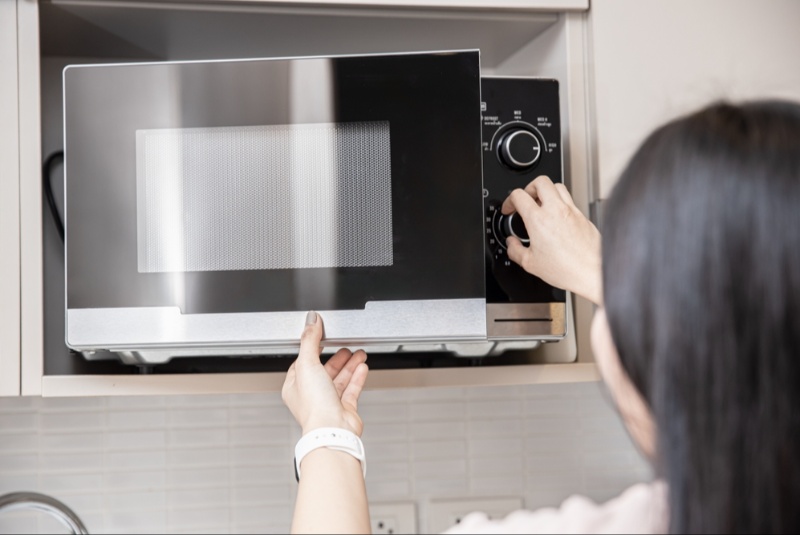A microwave is one of the most essential appliances in any modern kitchen. From reheating leftovers to cooking full meals, a microwave offers speed, convenience, and energy efficiency. Whether you’re pressed for time or want to make meal prep simpler, a microwave can help you accomplish these tasks quickly. In addition to reheating food, many microwaves have advanced features such as defrosting, grilling, and even convection cooking. If you’re in the market for a new microwave, understanding what to look for will help you choose one that best suits your needs, ensuring you get the most out of your purchase.
Consider the Size and Capacity of the Microwave
The first thing to think about when buying a microwave is its size and capacity. Microwaves come in a variety of sizes, ranging from compact models to larger, full-sized units. If you have limited counter space or live in a smaller household, a compact microwave may be the best choice. For larger families or those who like to cook bigger portions, a full-sized microwave with a capacity of at least 1.5 cubic feet is ideal. Always measure your available space before purchasing to ensure that the microwave will fit comfortably in your kitchen.
Choose Between Countertop and Over-the-Range Models
There are two main types of microwaves: countertop and over-the-range (OTR) models. Countertop microwaves are the most common and are easy to set up, requiring only a flat surface and a power outlet. They are portable and offer flexibility in placement. Over-the-range microwaves, on the other hand, are installed above your stove and combine a microwave with a built-in ventilation system. These models save counter space and are ideal for smaller kitchens. Consider whether you need the extra ventilation of an OTR model or if a countertop microwave suits your space and cooking habits better.
Look at Wattage for Cooking Power
Wattage determines the cooking power of a microwave, with higher wattage resulting in faster cooking times and more even heating. Most microwaves have wattages ranging from 600 to 1,200 watts. For basic tasks like reheating or defrosting, a microwave with around 700 to 800 watts is usually sufficient. However, if you plan to cook more complex meals or frequently use your microwave for longer durations, consider a model with 1,000 watts or more for better performance. Higher wattage ensures that food cooks evenly and efficiently, making it worth the investment for more frequent use.
Evaluate Advanced Features and Cooking Functions
Today’s microwaves offer much more than simple reheating. Many models come with advanced features and cooking functions designed to make meal prep easier. Features like sensor cooking, which adjusts cooking time and power based on the moisture levels in your food, ensure optimal results every time. Some microwaves also include grilling, convection cooking, or steaming capabilities, adding versatility to your kitchen. If you enjoy experimenting with different cooking techniques, consider investing in a microwave with these additional functions. The right features can expand your cooking possibilities and make your microwave a more valuable tool in your kitchen.

Consider the Microwave’s Interior Design and Materials
The interior design of a microwave affects both its performance and ease of cleaning. Some microwaves come with stainless steel interiors, which are durable and distribute heat more evenly than standard plastic interiors. Stainless steel interiors are also easier to clean, as they resist staining and do not retain odors. Look for a microwave with a removable turntable or a flatbed design, which provides more even cooking by rotating food or distributing heat evenly across the interior. A well-designed interior ensures that food cooks consistently and that the microwave is easy to maintain.
Check for Ease of Use and Control Panel Design
The usability of a microwave’s control panel is an important consideration, especially if you want a model that’s simple to operate. Look for a microwave with a clear, easy-to-read display and intuitive buttons or a touch screen. Many microwaves feature preset cooking programs for common tasks like reheating pizza, defrosting meat, or cooking popcorn, making it easier to get precise results with minimal effort. If you prefer more control over your cooking, choose a microwave with adjustable power levels and time settings. A well-designed control panel simplifies operation, making the microwave more user-friendly for daily use.
Assess Noise Levels During Operation
Microwaves can vary significantly in terms of noise levels, and this is an often-overlooked factor when making a purchase. If you’re sensitive to noise or live in a household where quiet operation is important, look for a microwave that operates quietly. Some microwaves include features like soft-close doors or quieter magnetrons, reducing the overall noise produced during use. Reviews and product specifications often provide information on noise levels, so it’s worth checking before buying. A quieter microwave ensures a more pleasant cooking experience, particularly in open-plan kitchens or small living spaces.
Check for Safety Features and Child Locks
Safety is an important aspect to consider, especially if you have young children in your household. Many microwaves come equipped with child lock features, which prevent the microwave from being operated accidentally. These locks are typically activated by holding down a specific button or combination of buttons on the control panel. Additionally, look for models with automatic shutoff features that turn the microwave off when the cooking cycle is complete. These safety features provide peace of mind and prevent potential accidents, ensuring that your microwave is safe for all family members to use.
Set a Budget and Compare Brands
Microwaves come in a wide range of prices, from budget-friendly models to high-end appliances with advanced features. Before you start shopping, set a budget based on your needs and how often you plan to use the microwave. Basic microwaves are often sufficient for occasional use, while more expensive models may offer extra features like convection cooking, smart technology, or higher wattage for frequent cooking. Compare different brands and read reviews to ensure that you’re getting the best value for your money. Well-known brands often offer reliable products with warranties, giving you peace of mind with your purchase.
Make the Right Choice for Your Kitchen
Buying a microwave requires careful consideration of various factors, including size, power, features, and budget. Whether you’re looking for a basic model to handle reheating tasks or a high-tech appliance with advanced cooking functions, understanding your needs and kitchen layout will help you make the right decision. By choosing a microwave with the right combination of power, capacity, and user-friendly features, you can simplify meal preparation and enjoy greater convenience in your kitchen. Investing in the right microwave will save you time and effort, making it an essential part of your daily cooking routine.





